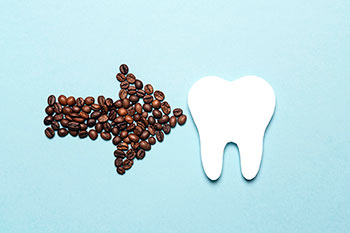
Tooth stains can be broken down into two categories. The two categories are extrinsic staining, meaning on the outside surface of the teeth, and intrinsic staining, meaning inside the teeth. Extrinsic staining is removable staining and will come off at a regular dental cleaning. In contrast, intrinsic staining is permanent and can only be removed with whitening products that enter into the underlying tooth structure.
What Does The Colour Of The Tooth Stain Mean?
Orange Stains
A particular type of bacteria that is linked to cavity formation causes orange stains. It typically appears along the gum line of molar teeth, but can also appear at the gum line of front teeth. The orange stains are sticky and retentive, but are extrinsic and can be removed at a regular dental cleaning appointment.
Yellow Stain
Yellow stains are caused by heavy plaque formation. As plaque builds up on tooth surfaces, it will begin appearing yellow. Yellow staining is extrinsic and can be brushed and flossed off the teeth. It can also be removed at a regular dental cleaning appointment.
Green Stain
Green stain is a scarce type of staining and is only found on teeth shortly after erupting. It is called Nasmyth’s membrane, and it is surface staining, meaning it can also be removed at a dental cleaning.
Blue Stain
Blue stain is the first type of intrinsic stain, meaning that it is permanently discoloured tooth structure. It is caused by a condition called dentinogenesis imperfecta. It is caused by a disruption of the tooth formation and appears as a blueish hue to the teeth. There is a genetic predisposition for dentinogenesis imperfecta.
Brown Stains
Brown stains are typically external stains caused by certain foods and drinks such as coffee, tea and red wine. Brown stain can also be caused by cavities.
Black Stains
Black stain is called black line stain and appears as dark black marks along the gum line and in any pits and indentations on the teeth. Blackline stain is extremely retentive and likely has a dietary link. Blackline stain is extrinsic and can be removed during a dental cleaning.
Grey Stains
Grey stains are usually caused by silver fillings shadowing through a tooth and are intrinsic in nature.
White Stains
White stains are intrinsic and can be caused by several conditions. The most common conditions that cause white staining on the teeth are enamel demineralization, such as the beginning stage of cavities, or in fluorosis, which causes white pitting of the enamel surfaces.
Extrinsic tooth stains can be removed at a regular dental cleaning, whereas intrinsic tooth stains require a more invasive measure such as tooth bleaching or teeth whitening. It is important to speak with your dentist if you notice staining on your teeth or you are unhappy with the appearance of your teeth. Contact us today to schedule an appointment to discuss your tooth staining.
